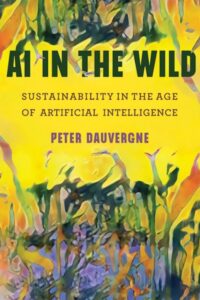 Back when I was a wee lad, I delighted in watching Mutual of Omaha’s Wild Kingdom. Every Sunday evening, I sat in rapt attention as Marlin Perkins narrated a new wildlife conservation research project that he had recently filmed with Jim Fowler. Particularly intriguing to me (technophilic child of the space race that I was) was their use of radio tracking collars and related devices to monitor and relocate particular animals as part of their research. At the time, such devices were among the most advanced forms of field-level scientific technology imaginable.
Back when I was a wee lad, I delighted in watching Mutual of Omaha’s Wild Kingdom. Every Sunday evening, I sat in rapt attention as Marlin Perkins narrated a new wildlife conservation research project that he had recently filmed with Jim Fowler. Particularly intriguing to me (technophilic child of the space race that I was) was their use of radio tracking collars and related devices to monitor and relocate particular animals as part of their research. At the time, such devices were among the most advanced forms of field-level scientific technology imaginable.
Spring forward fifty years and we’ve now got night-vision equipped drones monitoring elephant herds, undersea robots patrolling coral reefs, and remote sound monitors that automatically activate and alert authorities to illegal logging operations – all things that would have seemed outlandish even in the science fiction novels that filled my childhood bookshelves.
Yet as marvelous as such artificial intelligence technology is, and as powerful a tool for good as it has the potential to be for wildlife and environmental conservation, it has – as we have already too often seen – a dark side when misapplied in other areas. In his new book AI in the Wild; Sustainability in the Age of Artificial Intelligence from MIT Press, Prof. Peter Dauvergne guides his readers through a tour of some of the remarkable accomplishments applications of AI has made possible, some of its astonishing over-reaches and failures, and even behind the hyperbolic curtain to uncover the social and environmental costs its development and deployment incurs.
In a world that time and again too-readily falls into the trap of things being either absolutely good or irredeemably bad, Prof. Dauvergne’s attempt to present a nuanced and insightful examination of whether AI can be used responsibly for environmental and social good, as well as what its complete costs (including those generally hidden or unperceived) truly are, is a very welcome development indeed.
If you enjoyed reading this, please consider signing up for The Well-read Naturalist's newsletter. You'll receive a helpful list of recently published reviews, short essays, and notes about books in your e-mail inbox once each fortnight.
